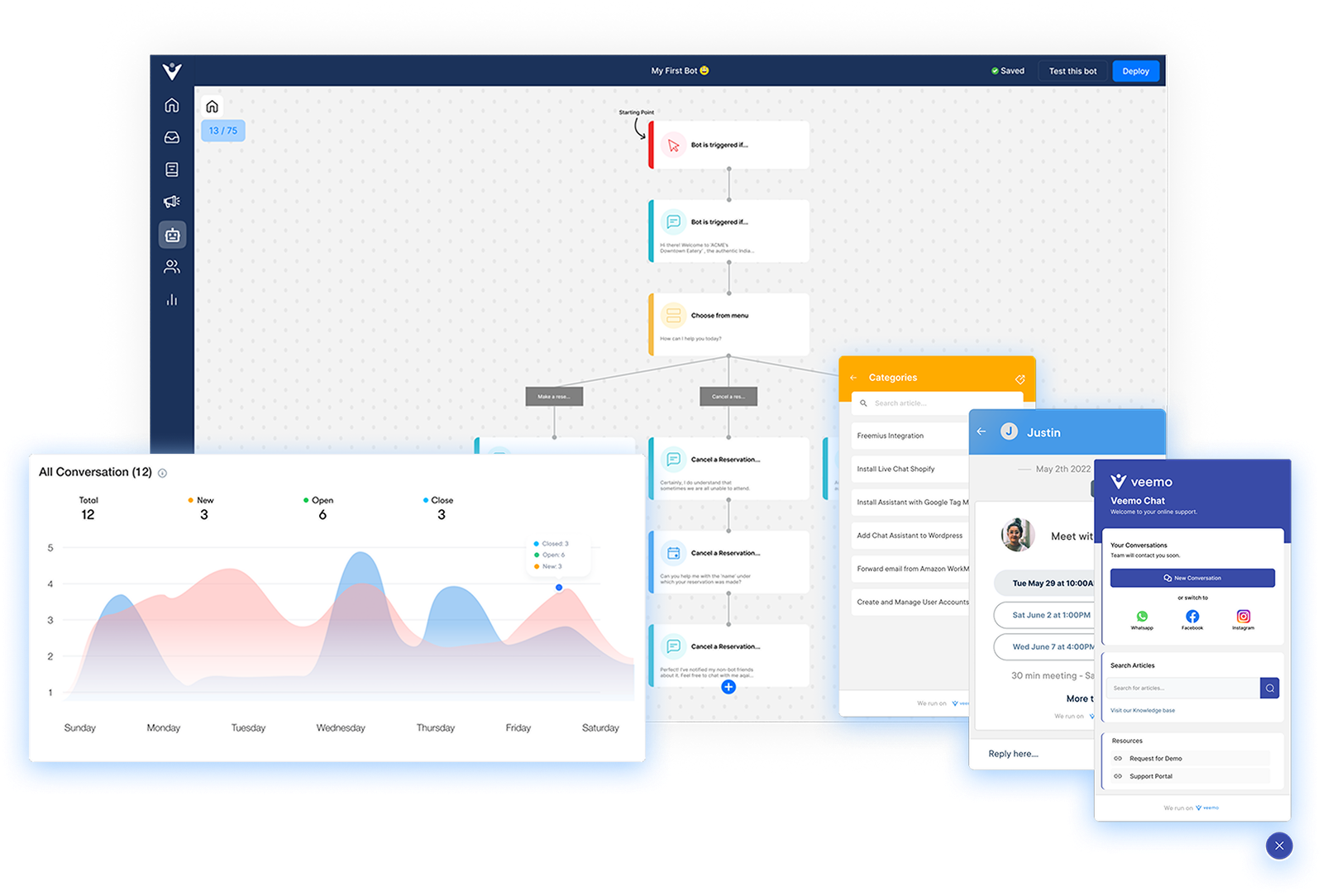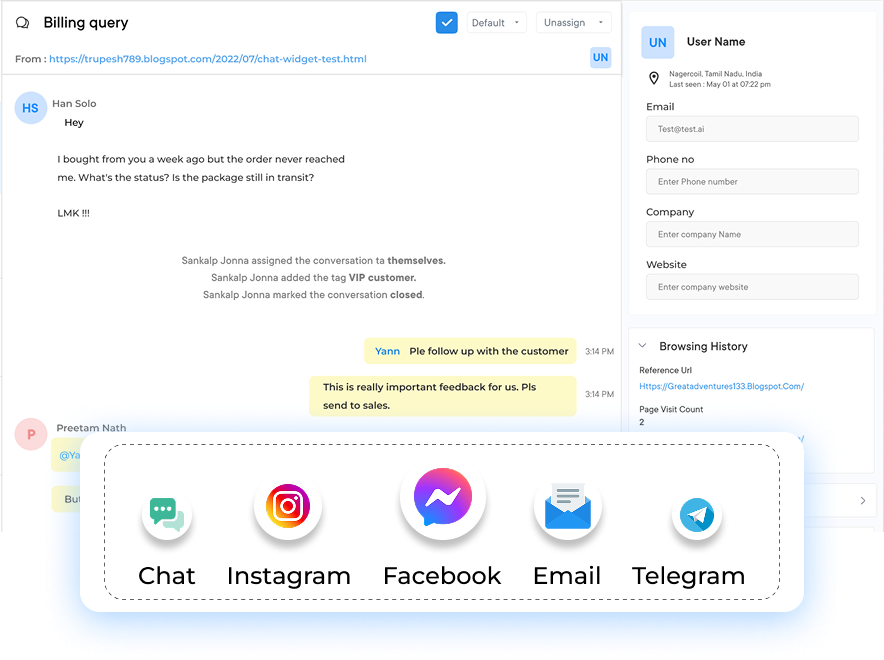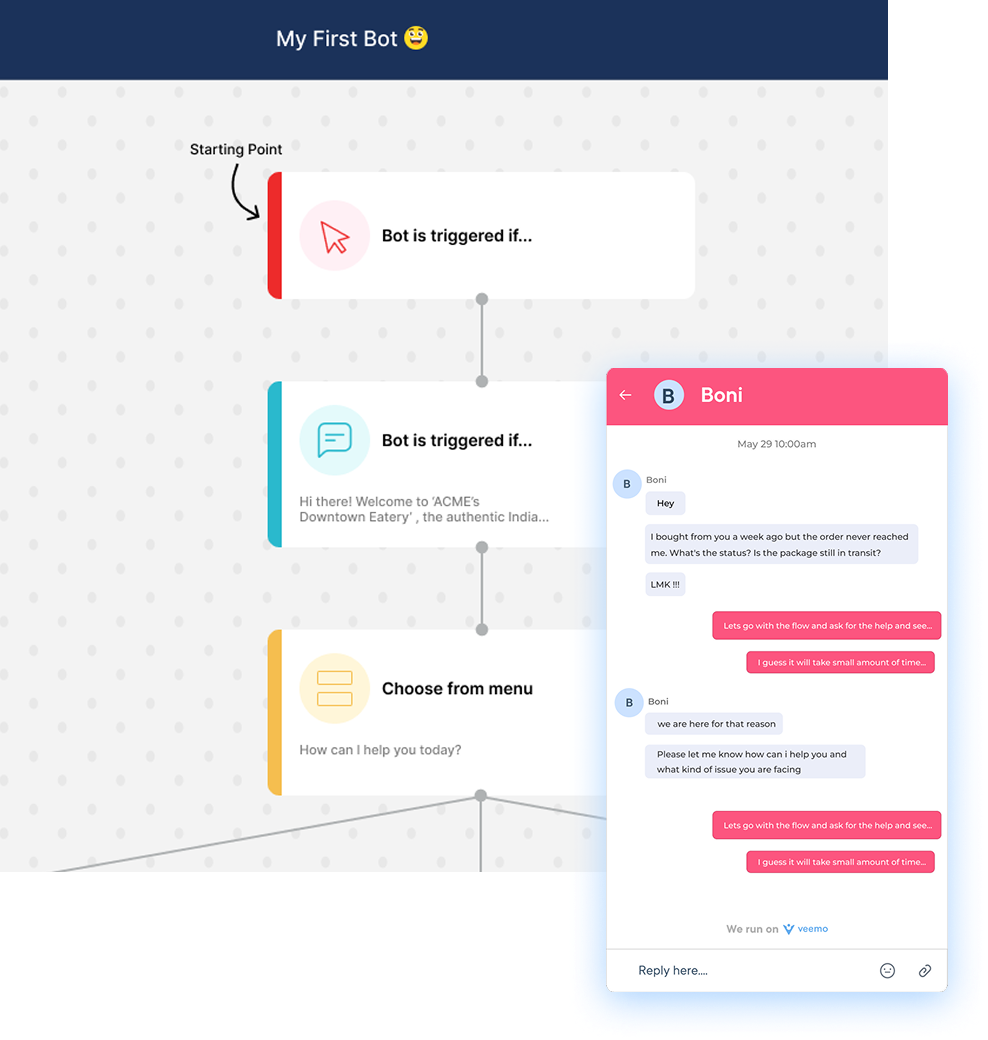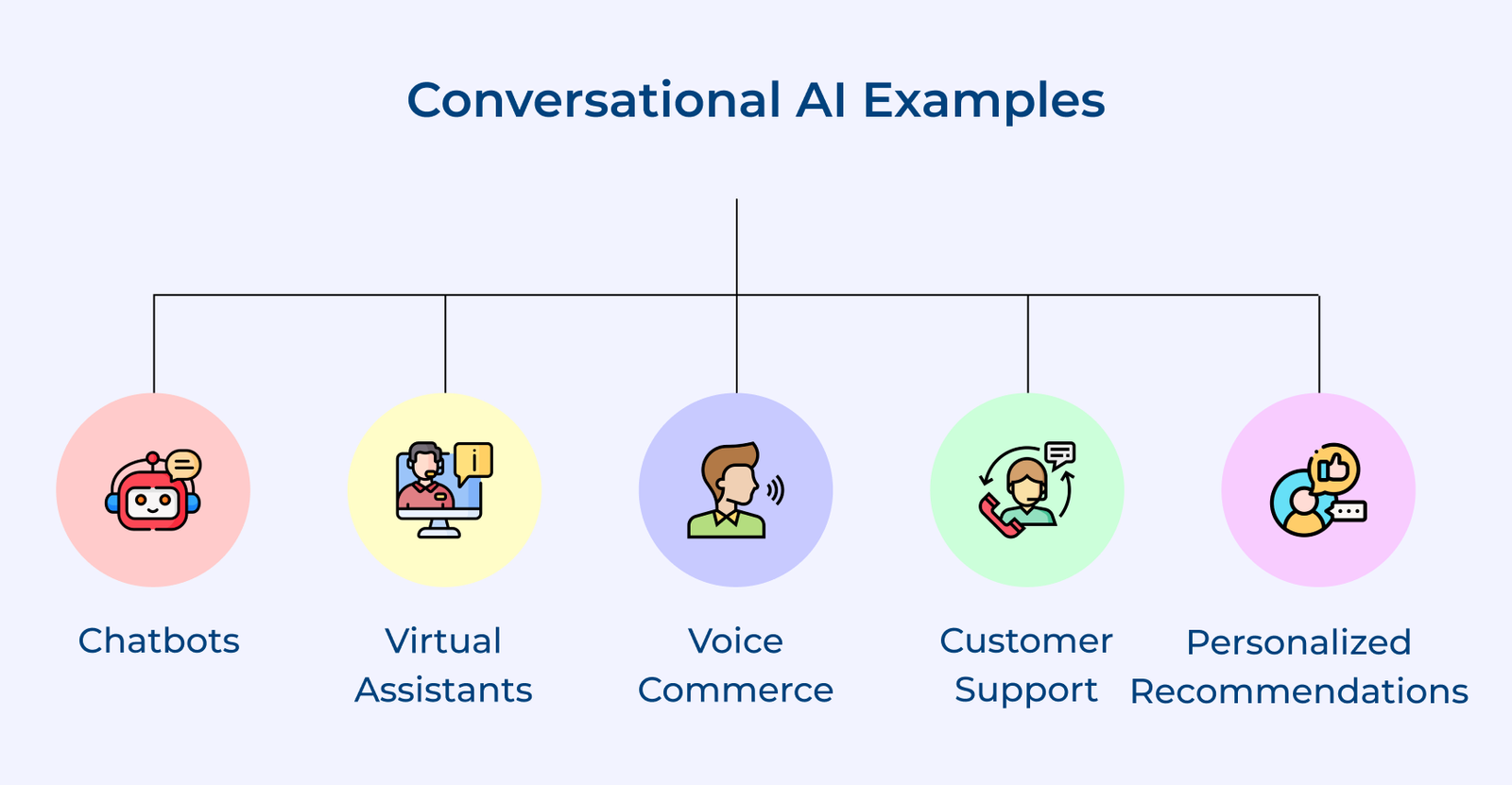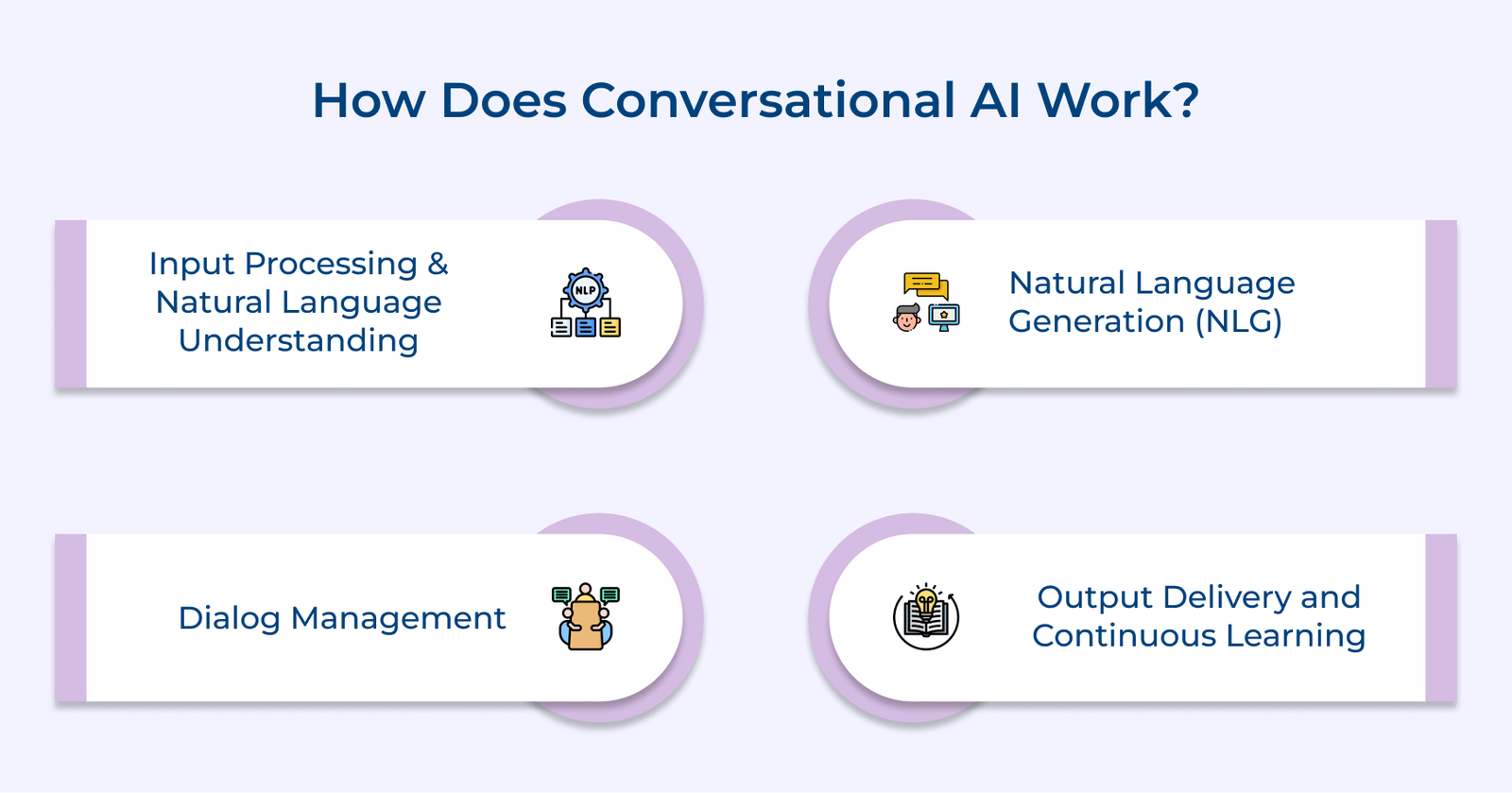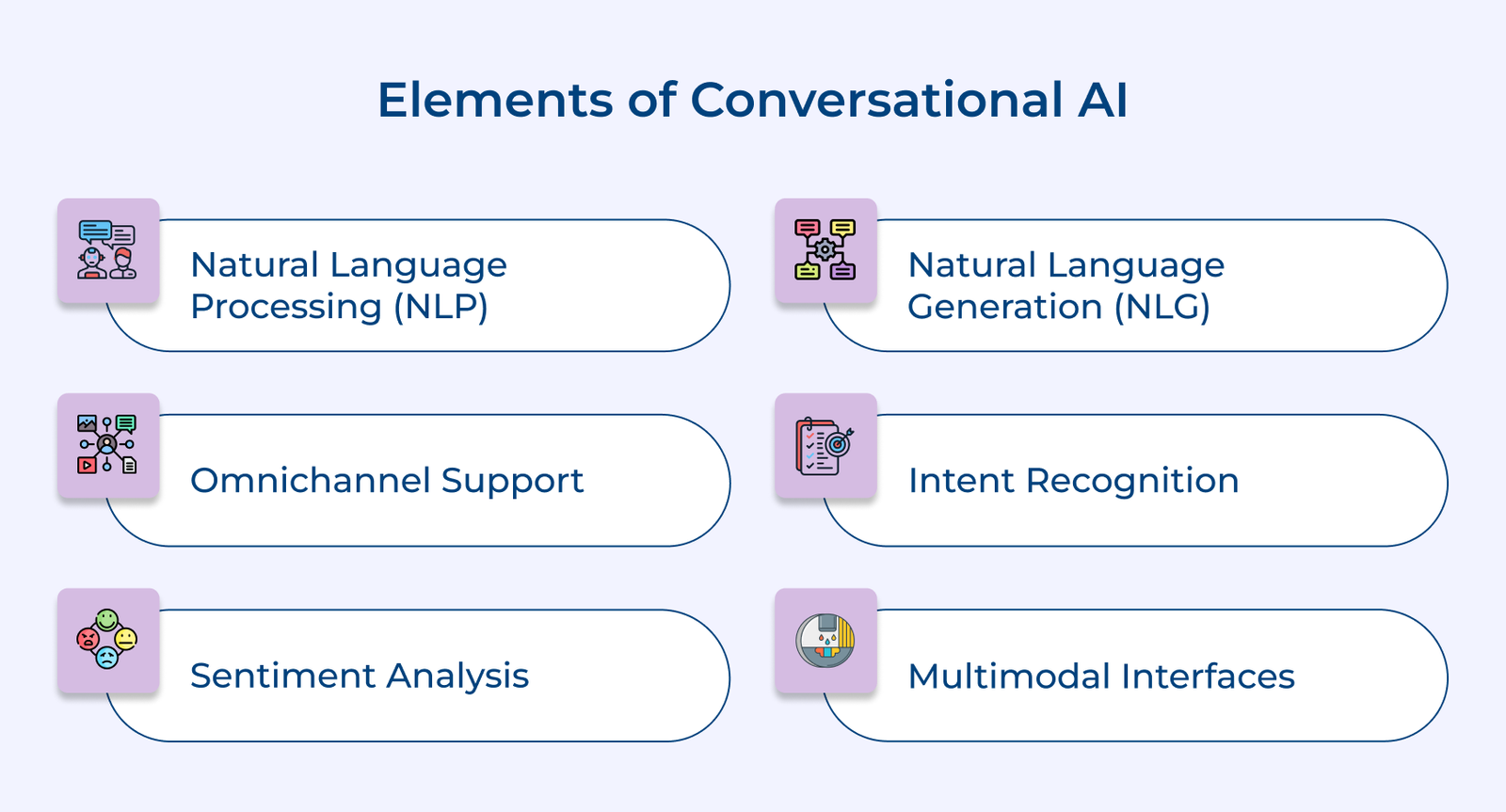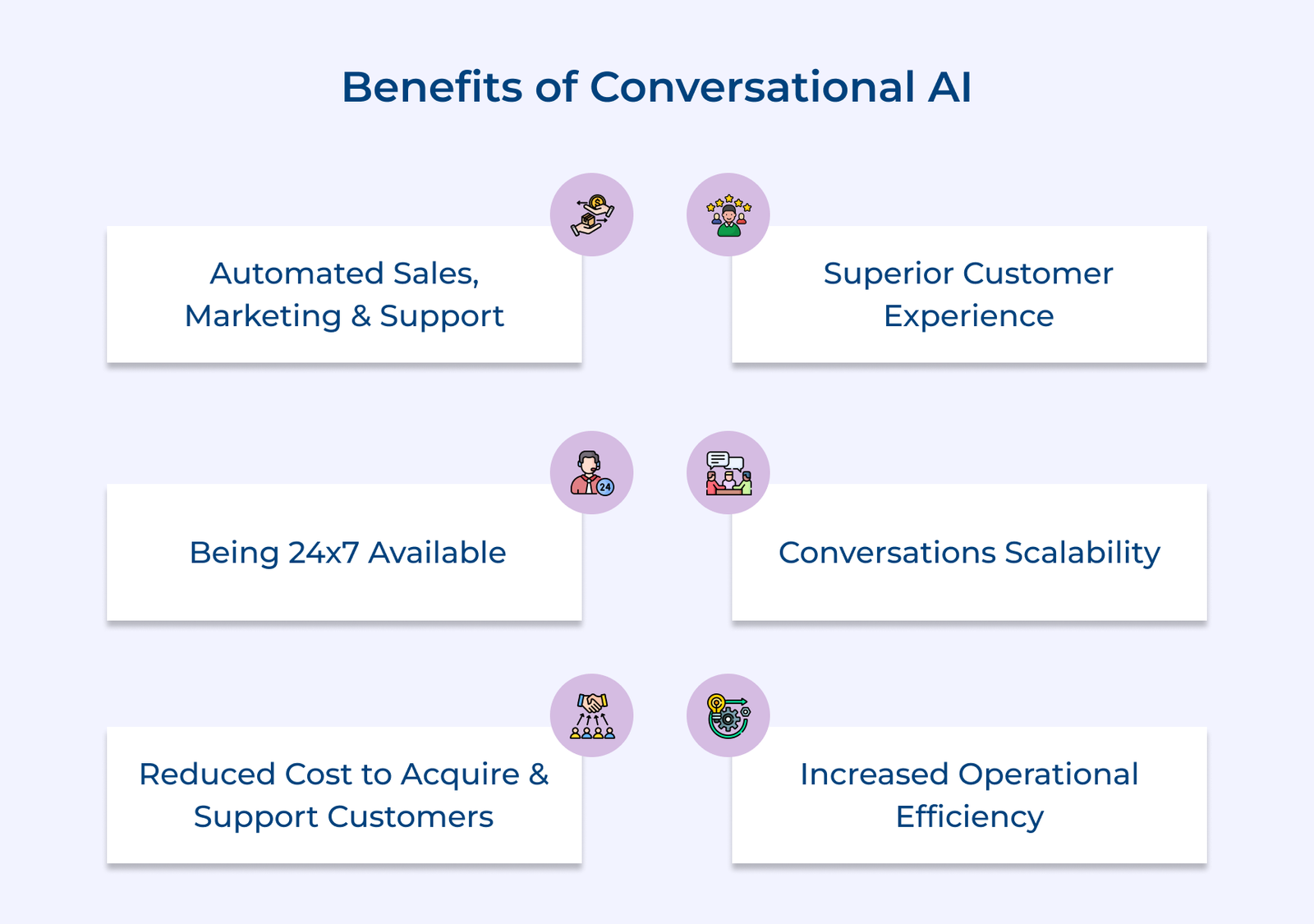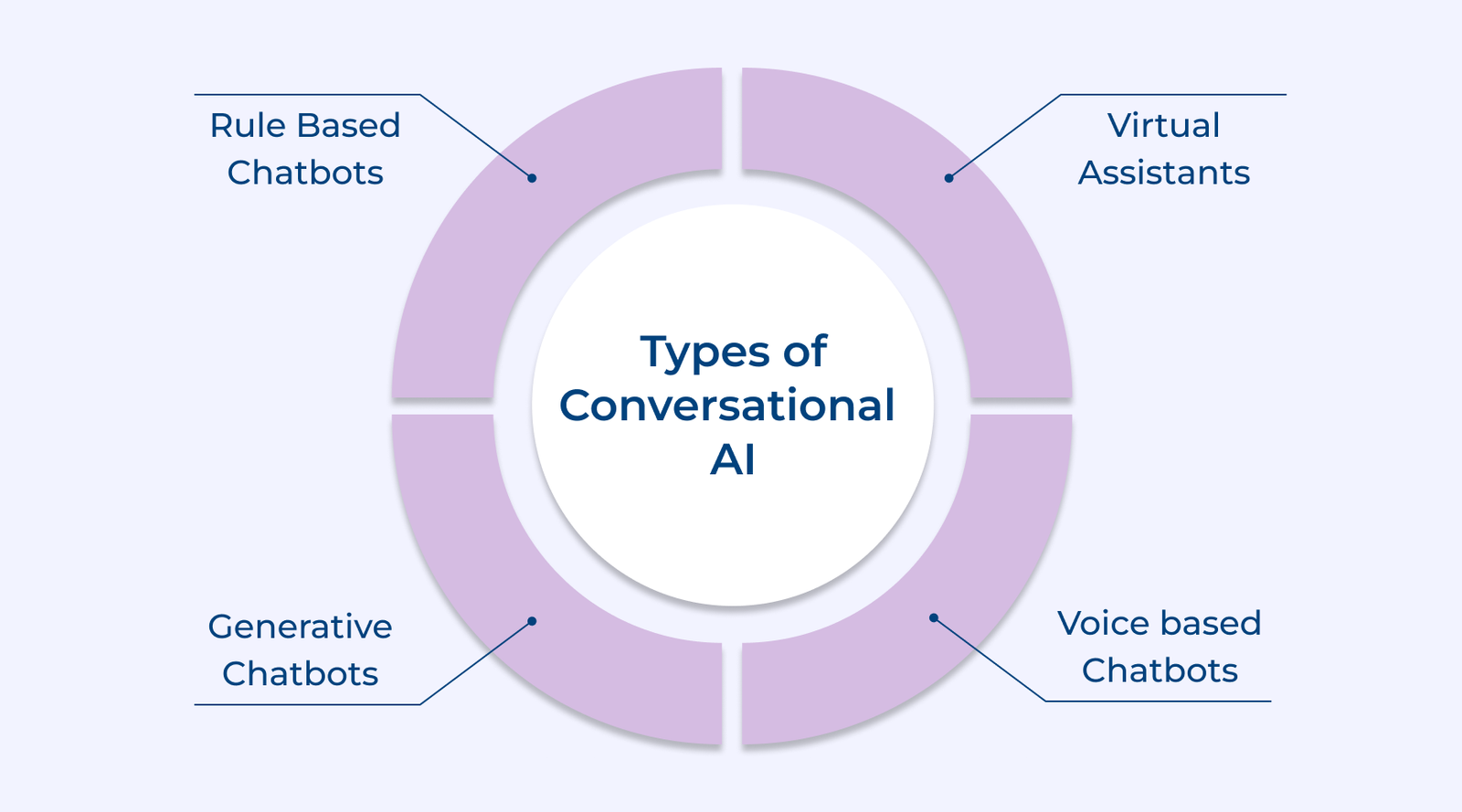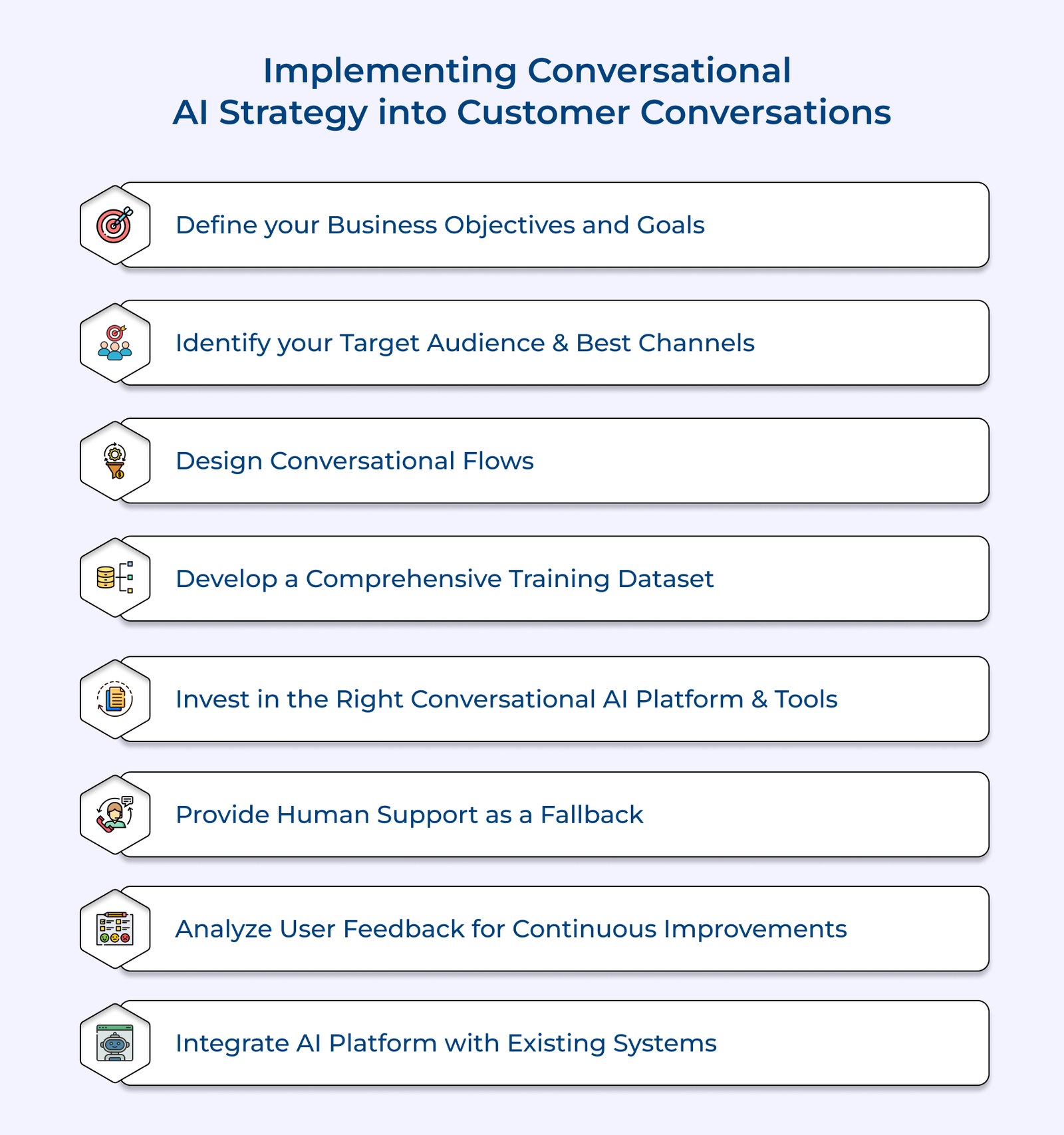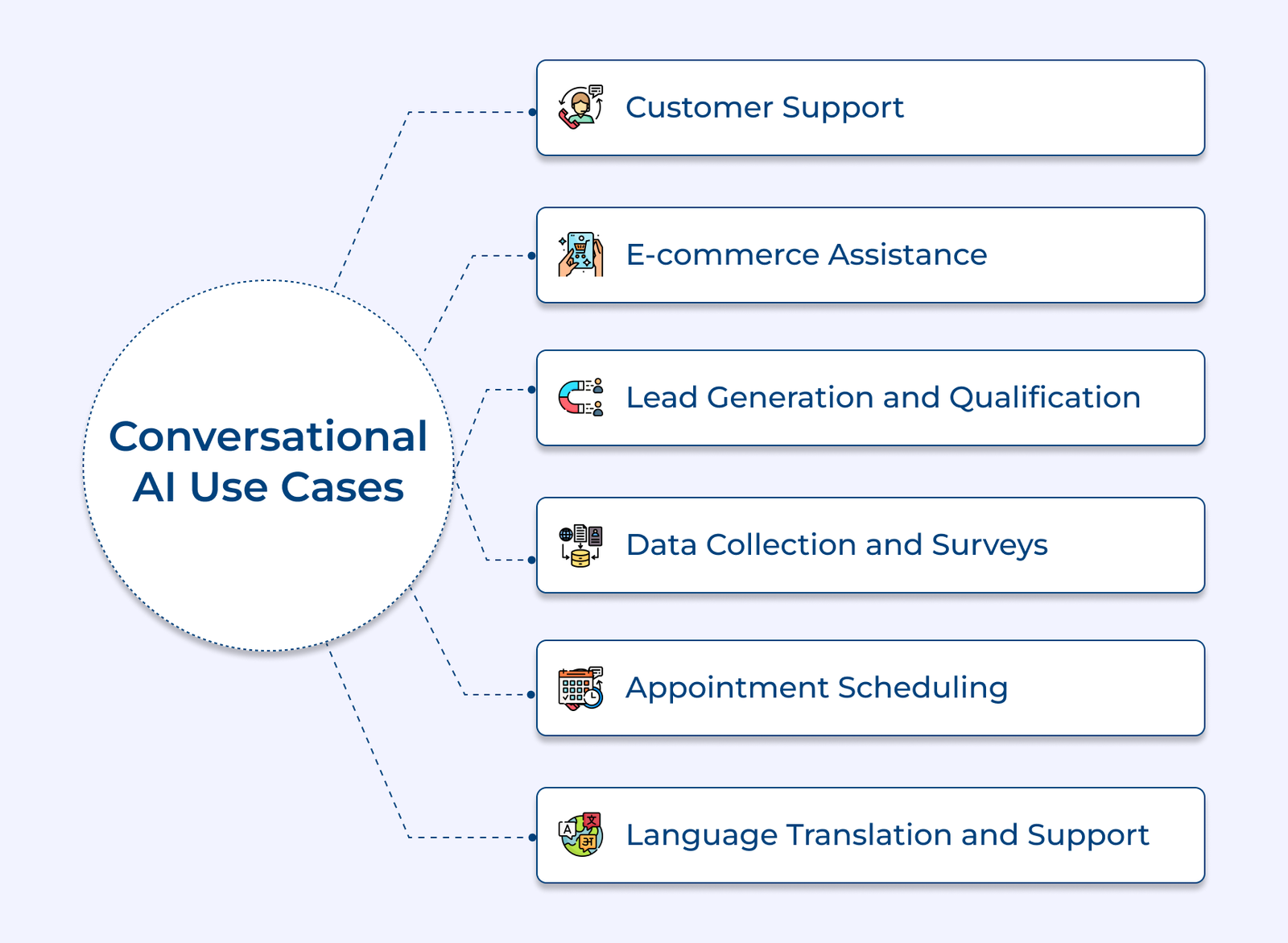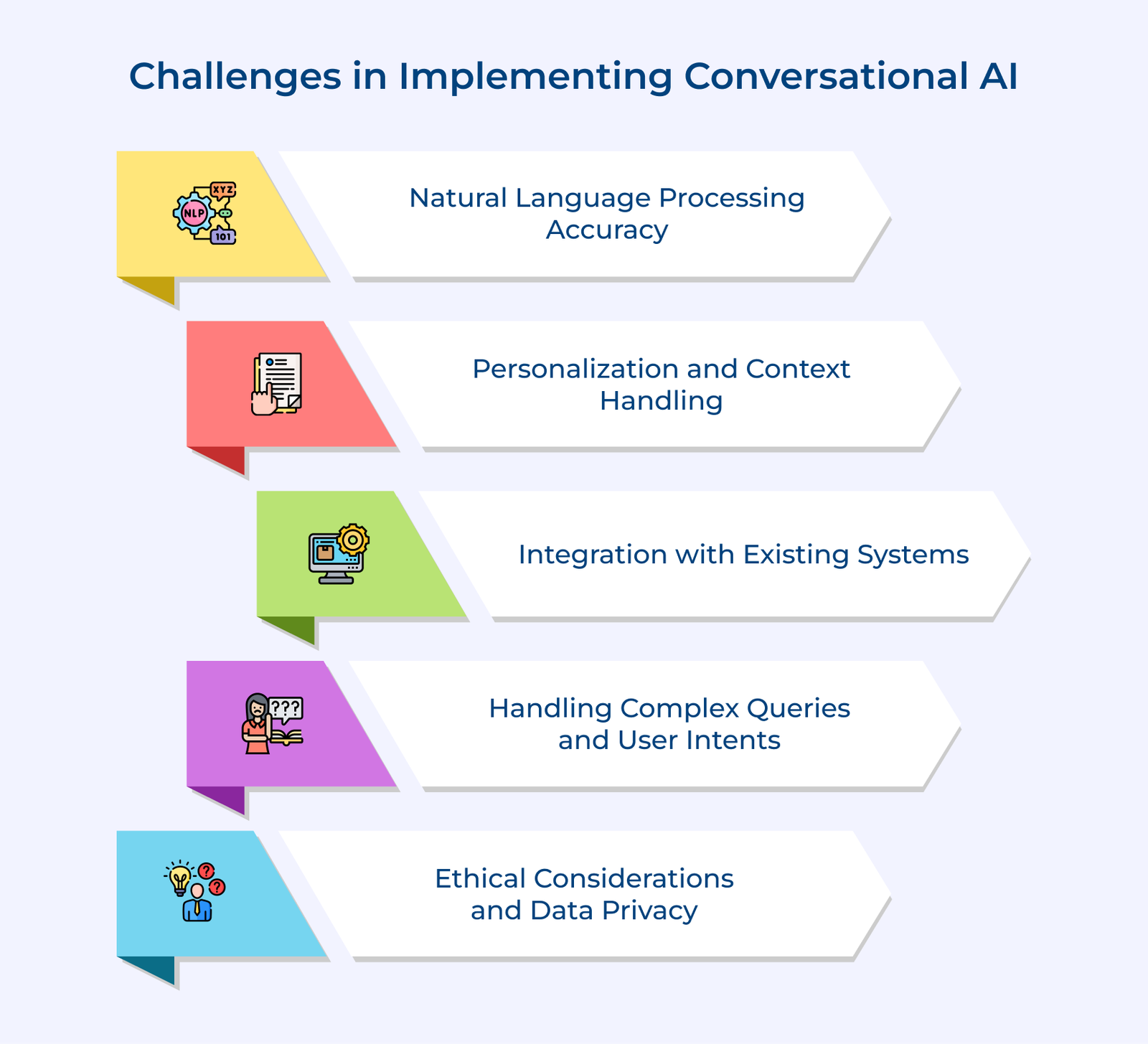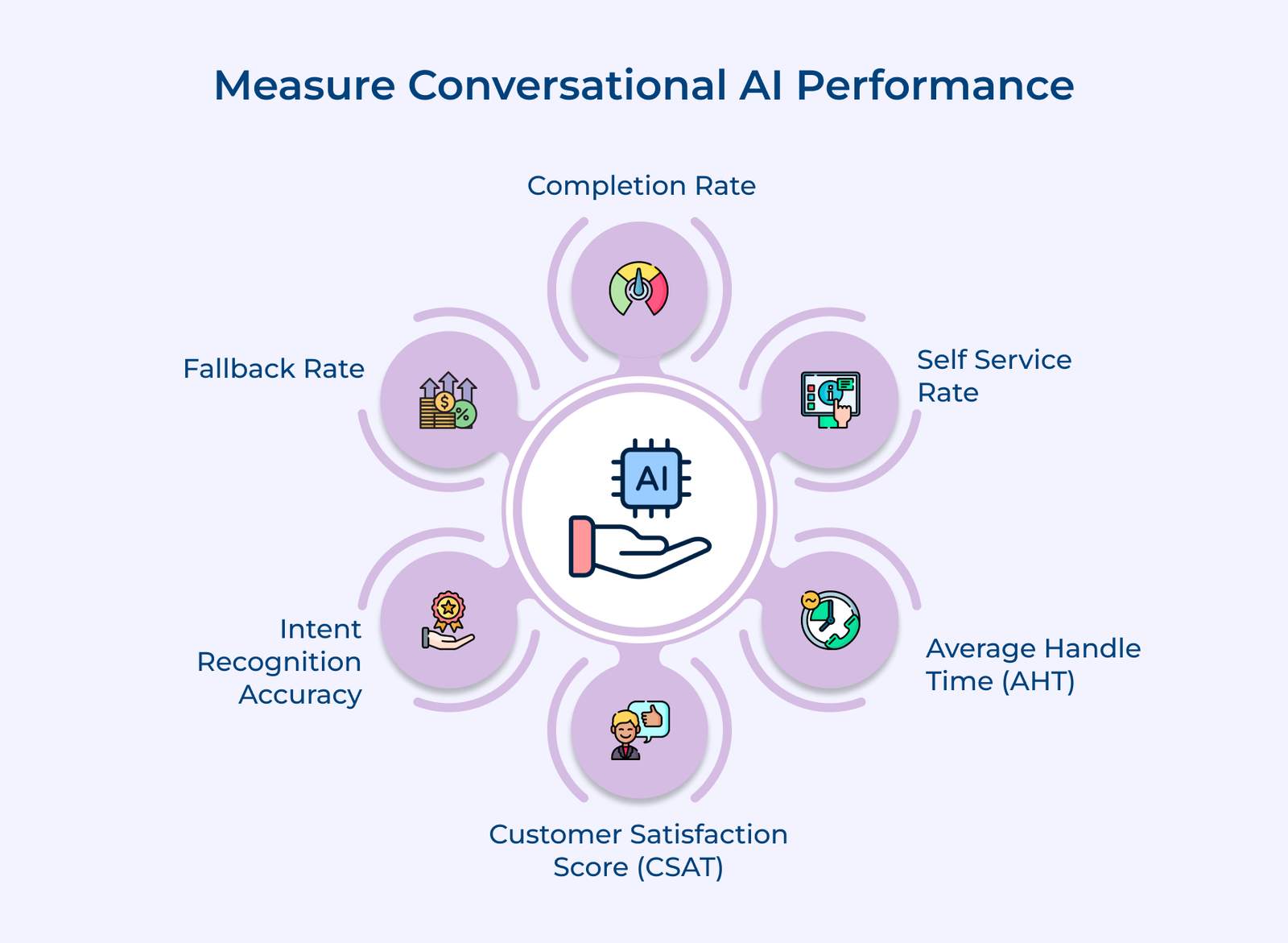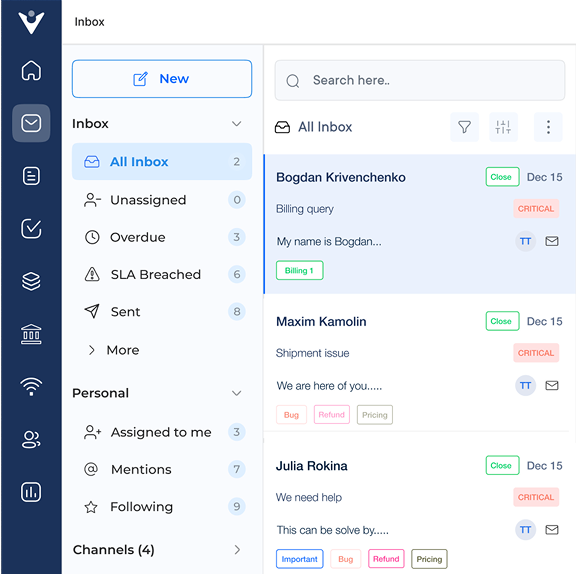1. Define your Business Objectives and Goals
Having clear business goals serves as the foundation for the entire process and ensures that your conversational AI strategy aligns with your overall business objectives. It not just helps you set realistic targets but also allows you to quantify how you would be measuring the success of the implementation. Whether it’s improving customer support, increasing sales or optimizing internal operations, defining your objectives helps you prioritize which areas to focus on.
Best practices:
- Engage stakeholders from different departments and levels of the organization to ensure that the defined business objectives align with the overall strategy.
- Clearly define metrics & KPIs that will allow you to track the progress of your conversational AI strategy.
- Regularly assess and adjust your business goals as your organization evolves with the changing market dynamics.
2. Identify your Target Audience & Best Channels
Knowing your customer personas lays the foundation for all your future efforts and ensures that your conversational AI strategy resonates with the right people in the right way. You can tailor your chatbot’s functionalities to meet their specific needs, resulting in a more impactful implementation of conversational AI. It not only enhances the user experience but also improves customer satisfaction.
Best practices:
- Gain comprehensive insights into your target audience’s demographics, behaviors, and preferences to tailor your conversational AI strategy accordingly.
- Continuously monitor & analyze data to understand how your target audience responds to your conversational AI efforts so as to make data-driven decisions accordingly.
- Regularly update your target audience profiles and channel strategies to ensure your conversational AI strategy remains aligned with the ever-changing digital landscape.
3. Design Conversational Flows
Conversational flows refer to the structured dialogue that takes place between users and AI assistants. Implementing effective Conversational Design principles ensures that the AI assistant understands user queries accurately and provides relevant responses, creating a user-centric flow. This doesn’t just improve customer experience but also reduces the workload on human support agents.
Best practices:
- Avoid overwhelming users with too many options or complex interactions.
- Utilize AI technologies to understand and interpret user input in a more human-like way, enabling more context-aware responses.
- Continuously analyze user interactions to identify areas for improvement, and make necessary adjustments to the conversational flow to enhance its effectiveness.
4. Develop a Comprehensive Training Dataset
A well-trained AI system can handle a variety of user queries and adapt to different conversation styles, leading to a better user experience. Meanwhile, a comprehensive knowledge base can be used to supplement the dataset, giving the AI access to a vast amount of structured data and domain-specific knowledge. This enables the system to provide more accurate and detailed responses to user queries, improving the overall quality of the conversational experience.
Best practices:
- Include a wide range of user queries, variations, and potential conversational scenarios in your dataset. This will help the AI system understand different contexts and adapt.
- As user queries & preferences change over time, it is essential to regularly refine the training dataset. AI systems stay relevant and provides accurate responses.
- Before using the dataset for training, validate the data to ensure accuracy and reliability. Remove any inconsistencies, errors, or biases from the dataset to prevent these issues from affecting the performance of the AI system.
5. Invest in the Right Conversational AI Platform & Tools
Conversational AI tools help to automate various customer interactions such as customer support, sales inquiries, and appointment scheduling. They use natural language processing & machine learning algorithms to respond to customer queries accurately. Having the right tools in place for the right business objectives not only saves time and resources for businesses but also allows them to deliver prompt & reliable support to their customers.
Best practices:
- Gain a deep understanding of your target audience, their preferences, and the types of conversations they commonly engage in. This will help you tailor the conversational AI tools and technologies to meet their specific needs effectively.
- Continuously train the AI model powering the conversational AI software to ensure accurate and contextually appropriate responses.
- While conversational AI tools can handle a significant portion of customer interactions, it is essential to have a human support system in place for complex or sensitive queries.
6. Provide Human Support as a Fallback
While AI systems have made significant advancements in natural language processing and understanding, they may still encounter complex situations where their capabilities fall short. With the option of transferring the conversation to a human agent, businesses can guarantee that their customers receive the necessary assistance and avoid frustrating experiences. Customers appreciate the option to speak with a human representative if needed, as it shows that the company values their concerns and is committed to resolving any issues.
Best practices:
- Clearly define the thresholds or triggers that determine when the conversation should be transferred to a human agent, ensuring a seamless experience for the customer.
- Provide proper training and resources to the human agents involved in handling fallback conversations, enabling them to address customer queries efficiently.
- Continuously monitor & analyze the conversations handled by AI systems as well as human agents to identify patterns or areas where the AI can be improved.
7. Analyze User Feedback for Continuous Improvements
Customer feedback provides valuable information on how well the conversational AI system is performing and whether it is meeting user requirements. Without such first-hand feedback, businesses would not be able to understand how their conversational AI strategy is being received by their audience. Analyzing customer feedback also helps businesses make data-driven decisions to improve their conversational AI solutions, ensuring they stay relevant and valuable to users.
Best practices:
- Implement various channels, such as surveys, user interviews, and customer support tickets, to collect feedback from users at different stages of interaction.
- Leverage sentiment analysis tools to gauge the emotions and satisfaction levels of users based on their feedback.
- Establish a feedback loop that ensures the collected feedback is analyzed, acted upon, and communicated back to the users. This shows users that their feedback is valuable and leads to tangible improvements.
8. Integrate AI Platform with Existing Systems
Integrating your AI tools with existing channels enables the platform to access relevant data from different sources within the organization such as customer databases or CRM systems. It ensures that the AI is well-informed and can provide accurate responses to customer queries. Integrations also help to unify your customer data so that they receive personalized support across different touchpoints.
Best practices:
- Choose an AI platform that seamlessly integrates with existing systems. This requires thorough compatibility testing and collaboration with IT teams to ensure a smooth integration process.
- Tailor the AI platform to fit specific business needs and train it with relevant data. This customization will help the AI understand industry-specific terminology and provide accurate responses to customer queries.
- Continuously monitor the performance of the integrated AI platform and make necessary adjustments based on customer feedback to ensure its effectiveness.




